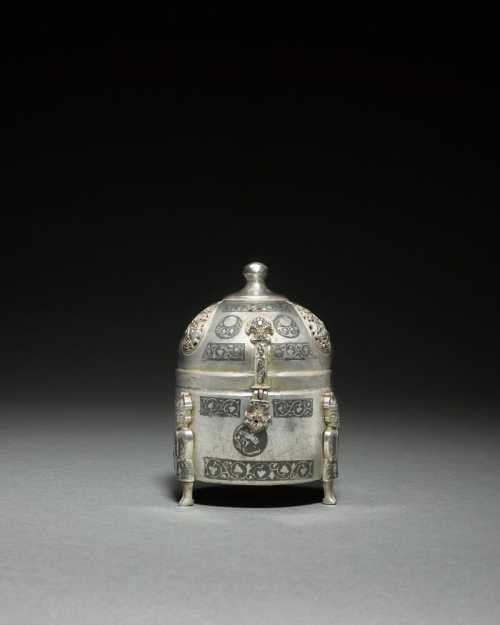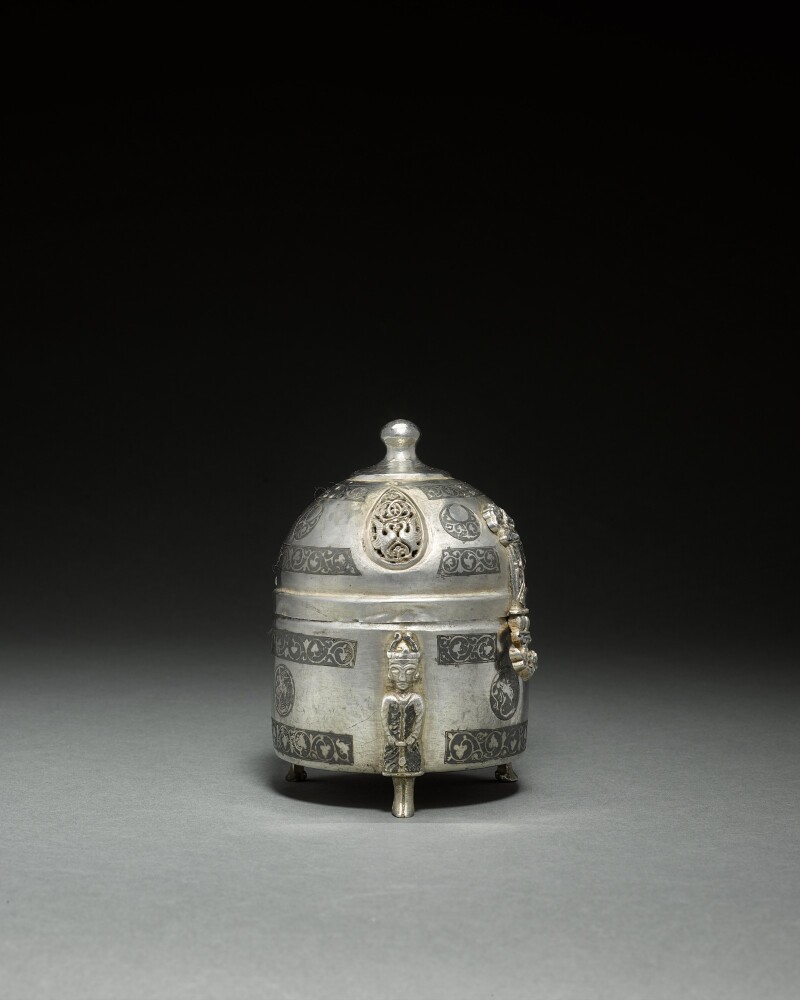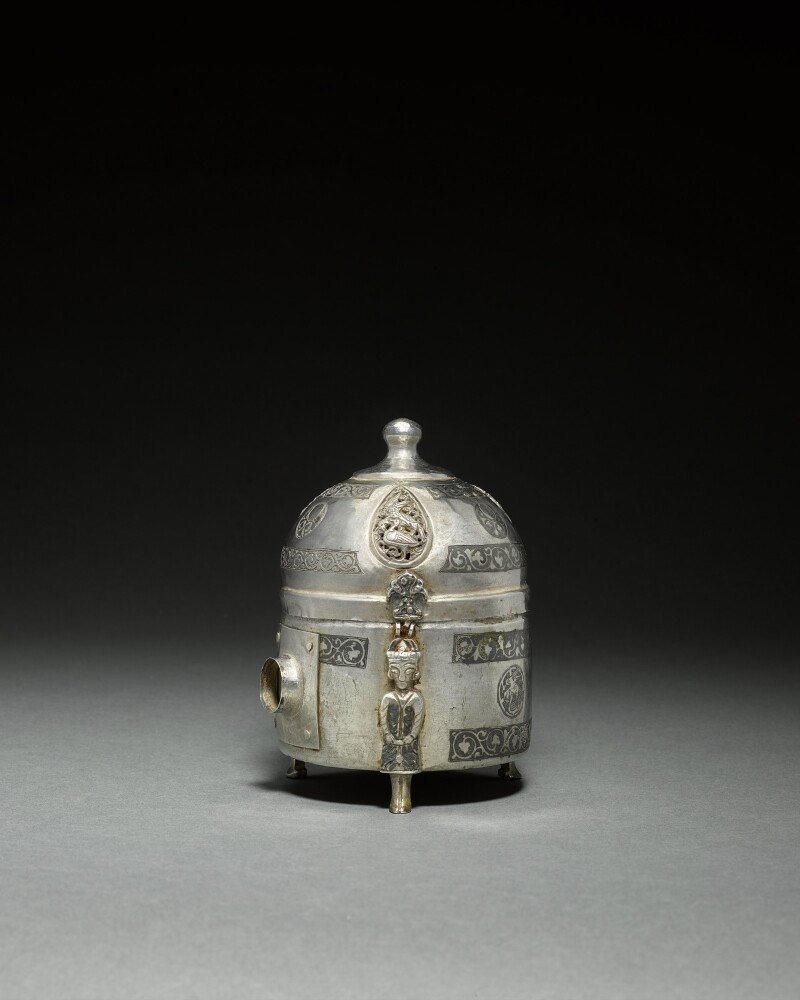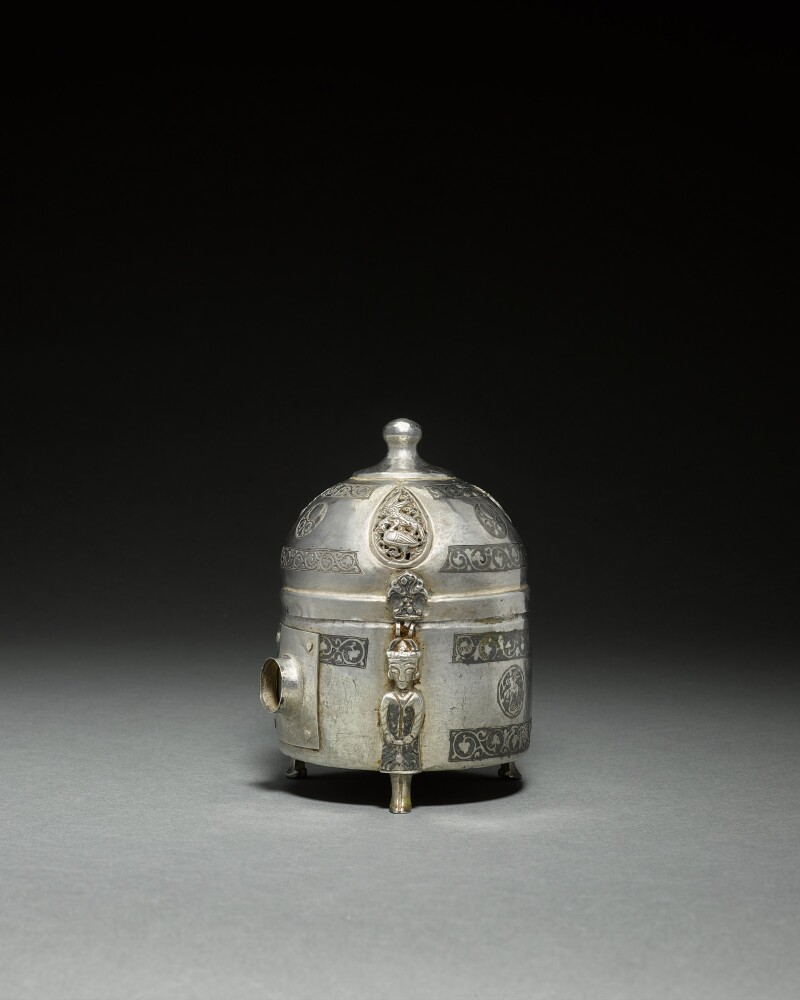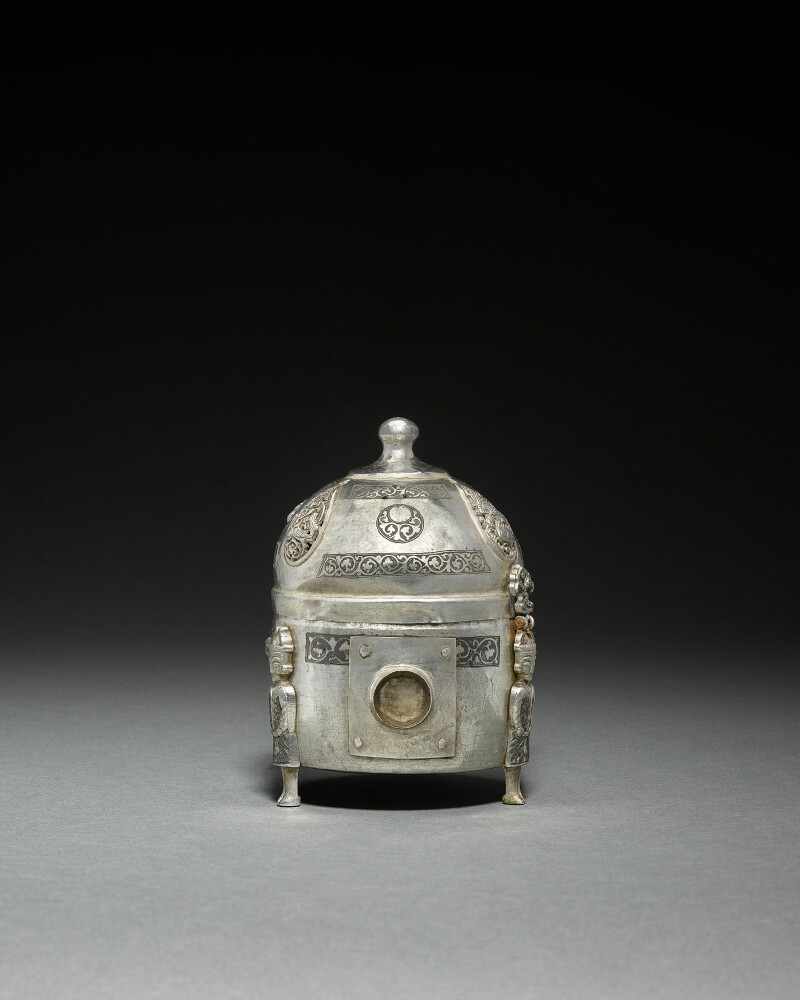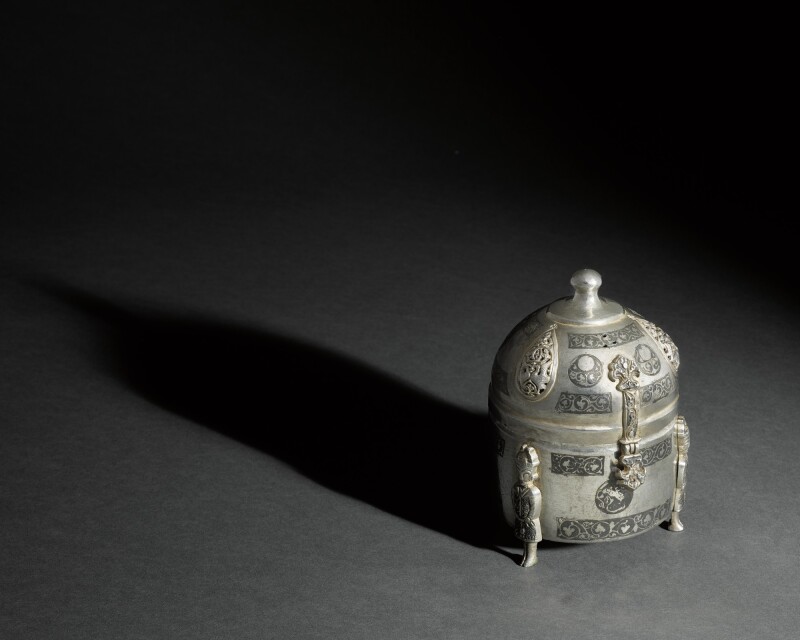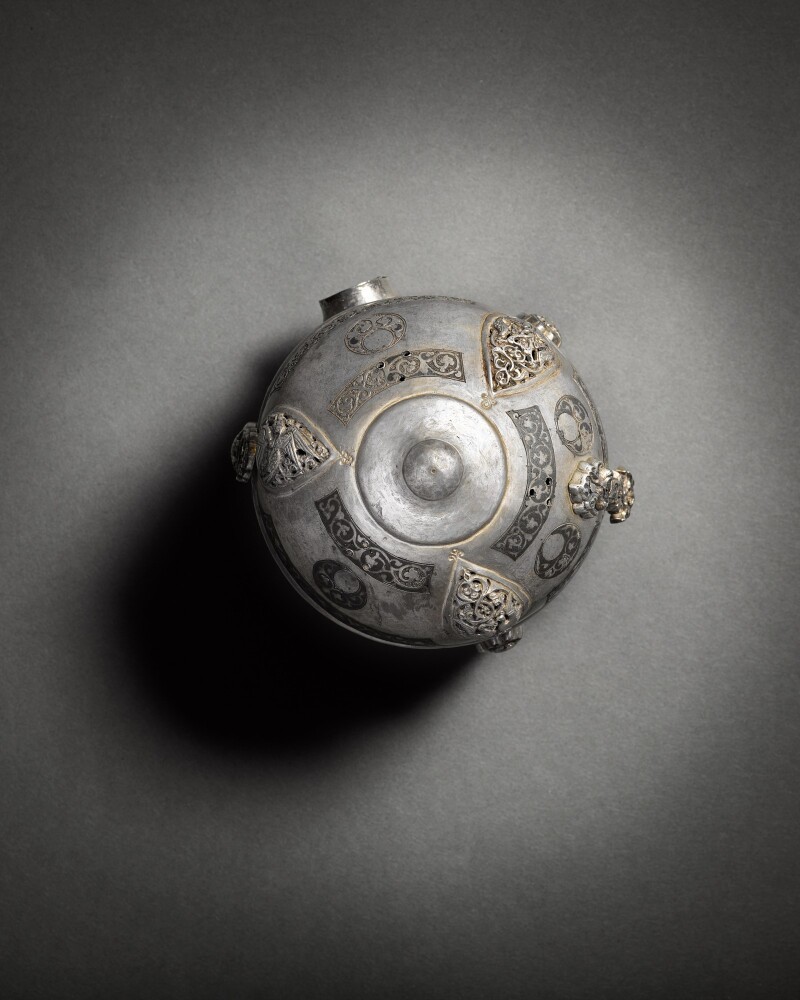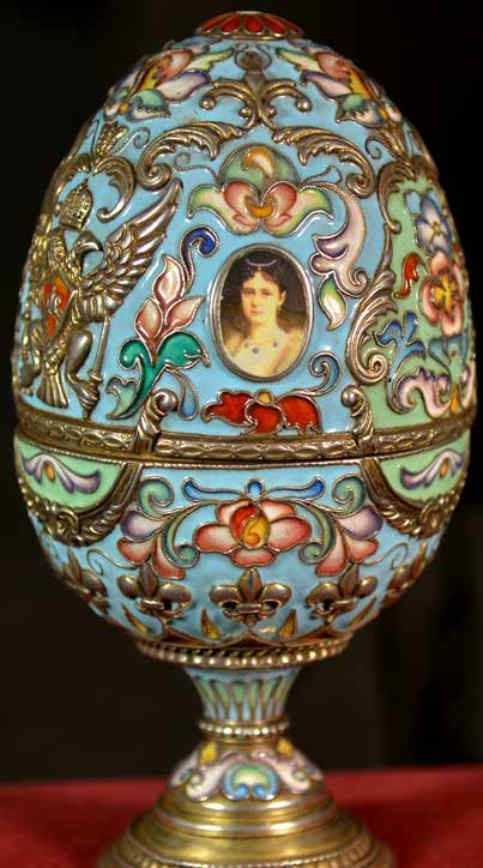- A Seljuq nielloed silver incense burner, Persia or Central Asia, 11th/12th century
- Handicrafts and classics, Metal
- 15 cm
- of cylindrical form on three feet shaped in the form of standing figures, the body featuring two roundels with birds, cartouches with palmettes running above and below, the domical lid with a knop finial, with three openwork tear-shaped roundels with birds interspaced with cartouches with palmettes and half-moon roundels with vegetal scrolls15cm. height; 10cm. diam.
Estimation
£200,000
261,780 USD
-
£300,000
392,670 USD
Unsold
Artwork Description
This elegant incense burner belongs to a group of metalwork objects connected to the ‘Harari Hoard’ and which only recently have been object of further scholarly attention. Once owned by the collector Ralph Harari and now in the L.A. Mayer Museum for Islamic Art, Jerusalem, the ‘Harari Hoard’ comprises various silver objects found in a large jug in northern Iran, apparently hidden by a merchant on his journey from East Iran to the West. The collection includes jugs, bottle vases, incense burners and miniature caskets, all originating from eleventh/twelfth-century Iran, in excellent condition (see R. Hasson, Masterworks from the Collections of the L.A. Mayer Museum for Islamic Art, Jerusalem, 2000, p.41). The pieces combine engraved decoration with nielloed designs, combined with calligraphic bands and gilt details.
An article by Boris Marshak discussing an acquisition by the State Hermitage Museum has drawn further attention to this group of nielloed silver, which has been attributed to the second half of the eleventh and the beginning of the twelfth century in the region of of Central Asia (see B.I. Marshak, 'An Early Seljuq Silver Bottle from Siberia' in Muqarnas, vol.21, 2004, pp.255-265).
A lidded jug now in the David Collection, Copenhagen (inv. no.36/2017), displays very similar motifs to those found on the present incense burner. The two roundels enclosing a hawk attacking a duck (a motif repeated in openwork on the lid) are closely comparable to one on the main body of the David Collection jug, and both pieces share the similar decoration of half-moon roundels filled with scrolls on their lids. The present piece also relates to a nielloed silver jug sold in these rooms, 27 October 2021, lot 169. Although the incense burner lacks any calligraphy, the roundels to the sides and treatment of spirals in the nielloed ground bear close comparison.
The standing figures which extend as feet are an interesting decorative feature found on another metalwork piece from the twelfth century: a casket with combination lock dated 593 AH/1197 AD, attributed to Seljuq Iran, now in the Museum of Fine Arts, Boston, inv. no.55.1113, published in Weinstein 2015, no.35, p.64. The front of the box bears three applied gilt-brass figures similar to those affixed to the present piece. Further examples of these figures are also discussed in Pope 1938-39, p.2481, figs.810a-d.
A square silver fitting with a circular hole has been attached to one of the sides of the present piece, on top of the existing decoration, suggesting that the burner existed as a stand-alone object before having a handle attached (now lost).
More lots by Unknown Artist
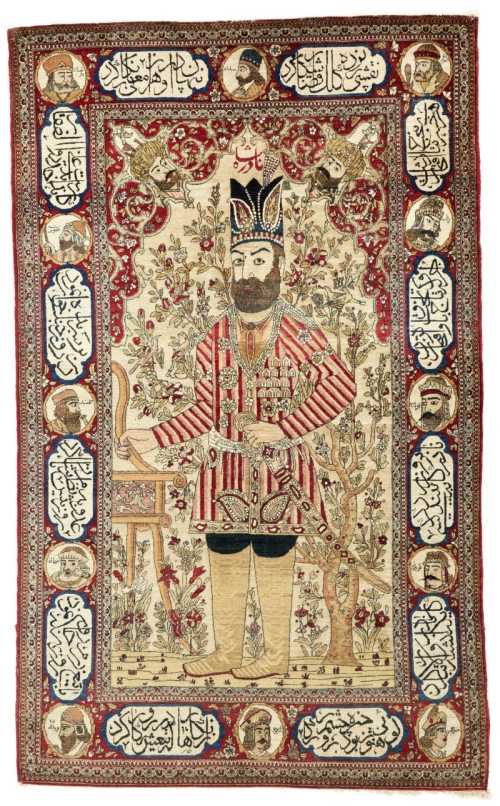
An Isfahan pictorial rug, Central Persia, circa 1910
Estimation
£4,000
5,236 USD
-
£6,000
7,853 USD
Realized Price
£5,670
7,421 USD
13.4%
Sale Date
Sotheby's
-
30 March 2022

A gold medal commemorating the coronation of Muhammad Reza Shah and Queen Farah
Estimation
£100
132 USD
-
£200
263 USD
Realized Price
£160
211 USD
6.667%
Sell at
Sale Date
Rosebery's Auction
-
1 April 2022
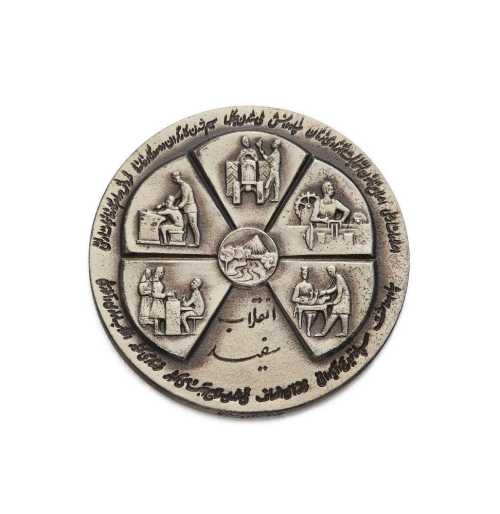
A silver memorial medal of the White Revolution, Muhammad Reza Shah, 1967
Estimation
£200
263 USD
-
£300
395 USD
Realized Price
£170
224 USD
32%
Sell at
Sale Date
Rosebery's Auction
-
1 April 2022
Realized Price
67,245 USD
Min Estimate
35,481 USD
Max Estimate
53,247 USD
Average Artwork Worth
+83.63%
Average Growth of Artwork Worth
Sales Performance Against Estimates
Average & Median Sold Lot Value
2021 - 2025
Performance vs. Estimate
2021 - 2025
Sell-through Rate
2021 - 2025
Similar Artworks

A fine Khurasan silver-inlaid bronze inkwell and cover, signed by Abu’l-Sa’d(?) … Shaburi, inscribed with the name Abu’l-Ma’ali Mawdud ibn Ahmad al-‘Asami, Persia, circa 1200
Estimation
£80,000
104,712 USD
-
£120,000
157,068 USD
Sale Date
Sotheby's
-
30 March 2022
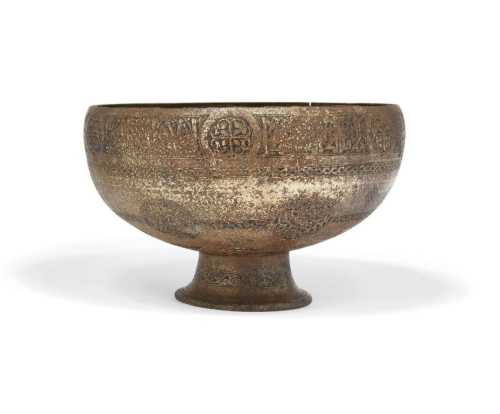
A inscribed and inlaid footed bronze bowl, Iran, 13th-14th century
Estimation
£500
658 USD
-
£700
921 USD
Realized Price
£500
658 USD
16.667%
Sell at
Sale Date
Rosebery's Auction
-
1 April 2022
